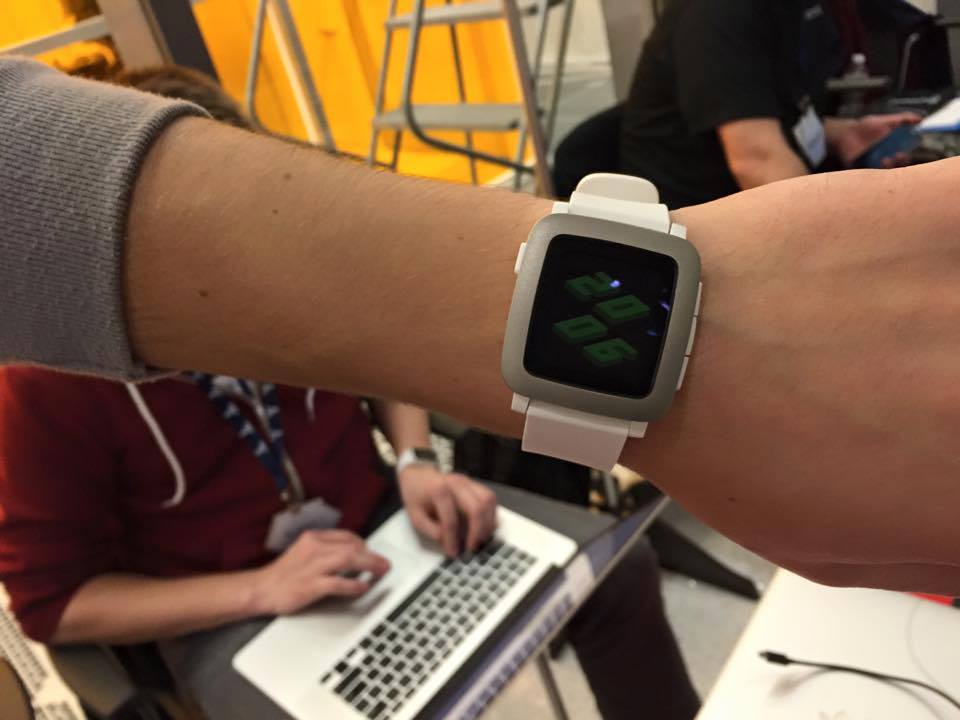by Matthew Ko | Photo credits: Wikimedia Commons, Apple PR, Hyounmin Wang | 2 March 2015
It was the initial consensus of the editorial board that wearable devices nowadays have minimal appeal to the general public. They are expensive (average around $200) and no more than smartphones with smaller screens. Besides, “we already have enough chargers in our bags”. Business Insider’s customer survey in October 2014 aligned with our contention, saying 51% of the uninterested customers believe that there is no point in buying smartwatches. Health and fitness bands have some niche in the market, thus with less perception problems. So the question was: why are most professionals counting on smartwatches for the greatest share in the wearable market?
Apple was the immediate answer. BI Intelligence forecasted that Apple Watch will account for 40% of smartwatch shipments in 2015 and reach a peak 48% share in 2017. Since Google is also in the fight, equipped with Android Wear, two companies’ platforms make up over 90% of the entire mobile platform market. This lets many mobile users gravitate toward Apple Watches and Android Wear-based devices. Apple Watch will enable users to customise and organise the Apple Watch’s home screen via a virtual view of the watch face on their iPhone, as well as manage settings for the clock, messaging, passcode, fitness, accessibility features etc., according to 9to5Mac.
The Apple Watch will launch in April, as confirmed by CEO Tim Cook during an astounding earnings call in January, with prices starting at $349 in the US. Apple is currently taking advantage of everyone’s temptation to have an Apple logo on his or her wrist. Sources told the Wall Street Journal the consumer electronics giant has asked suppliers to make between five to six million of its three models in anticipation of its forthcoming release.

Apple Watch
But the reason behind wearable devices’ potential popularity lies not only in the tech giants harbingering the market. Pebble is also a smart competitor being honest with their slogan ‘Made by real people, for real people’. Its smartwatch costs only $99, the steel design being only $199. (Eric Migicovsky himself was wearing the steel in an interview that took place in Korea last year) The battery life is second to none in the market. It can fully function for a week after a single process of charging. Pebble also have thousands of applications which users can choose, letting functions inside-and-out to be fully customised. Half the price, double the battery, with concise ‘killer apps’. The design of the product is another crucial attribution in achieving market hegemony. Customer reviews tell that Pebble steel is on the right track. Apple, of course, also wouldn’t disappoint us with Ive’s touch.
Wearable market’s growth will change things. BI Intelligence estimated smartwatch shipments will rise by a compound annual rate of 41% over the next five years. It will account for 59% of total wearable device shipments this year, expanding to just over 70% of shipments by 2019. This leaves enterprises to have opportunities to change in and out. Advertising and media contents would face a new phase. Enhancement on the technology of Internet of things is the promoter, as CES 2014 has proven with its unique alliances between car companies and tech blue-chips. The partnership landscape will radically change as wearables unite with unlikely allies.

Pebble Time
For consumers, wearables will provide a functionality that can improve the shopping experience and heighten convenience. These could include faster payment, more customized promotional deals or stronger insight into products and goods. According to PwC, innovative brands including Alex & Ani, Kenneth Cole and Barneys New York are launching wearable tech platforms. Consumers are prepared to see others roll out as well in the near future, expanding beyond the PC-Phone-Wearable trinity.
There is little question that wearable technology will soon be an integral part of almost every retail experience following dietary, exercise and medical information. What remains to be seen is which companies will get there first and profit the most. Pebble has made its first move. Its current Kickstarter campaign for the new smartwatch, Pebble Time, has already been supported by more than fifty thousand people with a budget of 12 million dollars in a week’s time. Pebble Time has a slightly wider screen compared to the previous designs, featuring a colour display readable in daylight encased in a thinner display. It has a new timeline interface that highlights what’s important in your day. Its own microphone and voice recognition system let Pebble to receive voice commands as well. This would definitely be a fun game to watch.
FROM EARLIER:
Business Insider: THE WEARABLES REPORT
9to5Mac: Apple Watch iPhone ‘Companion’ app revealed w/ new Watch features, monograms
WSJ: Apple Orders More Than 5 Million Watches for Initial Run
PwC Consumer Intelligence Series: The Wearable Future
Matthew Ko
Latest posts by Matthew Ko (see all)
- Pebble and Apple: Why We Might Be Using Wearables - March 2, 2015

